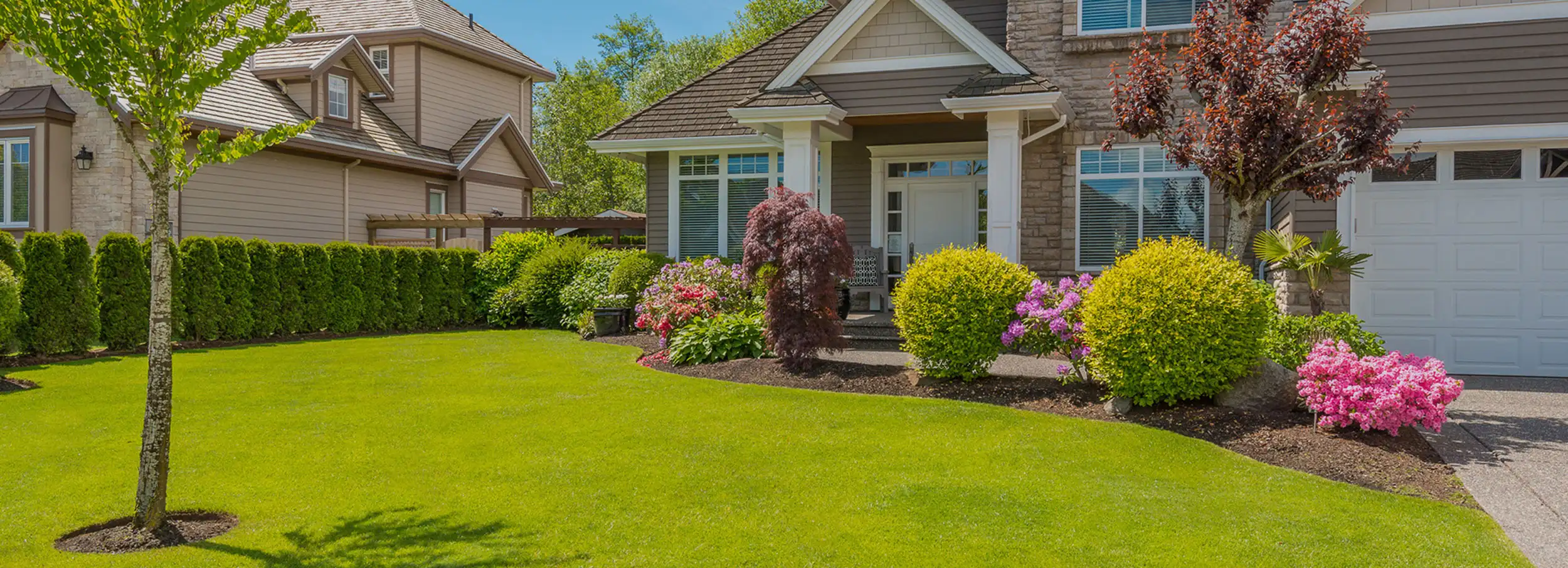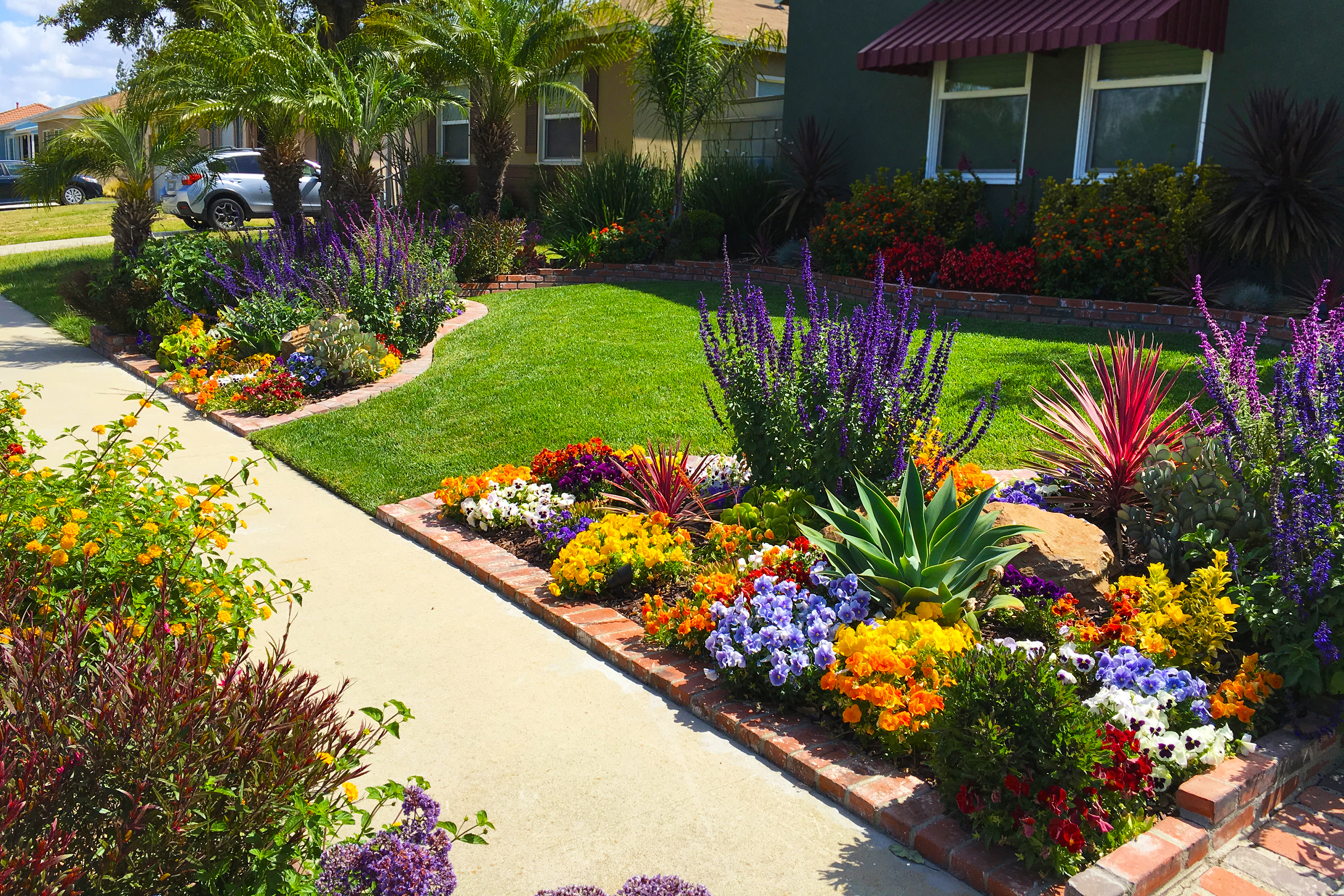Change Your Outside Space with Specialist Palm Desert Landscaping Solutions
Change Your Outside Space with Specialist Palm Desert Landscaping Solutions
Blog Article
A Comprehensive Overview to Designing and Implementing Effective Landscaping Solutions
The art and science of landscaping extend beyond simple looks; they involve a thoughtful assimilation of design principles, ecological stewardship, and useful execution. What methods can one utilize to guarantee these landscapes not just grow however additionally prosper in consistency with their environments?

Comprehending Landscape Layout Concepts
One may wonder what foundational aspects add to effective landscape design. At its core, successful landscape layout pivots on several crucial principles that guide the plan and choice of components within a space. These principles consist of unity, equilibrium, rhythm, and proportion, each offering to create a harmonious outside environment.
Unity refers to the natural connection amongst different elements, making certain that they interact aesthetically and functionally. Equilibrium can be accomplished through asymmetrical or balanced arrangements, enabling the landscape to really feel secure and welcoming. Proportion entails comprehending the scale of components in regard to each other and the surrounding setting, advertising visual harmony and comfort.

Assessing Your Outdoor Space
Before implementing the concepts of landscape design, an extensive evaluation of your outdoor room is vital. This initial assessment assists define the scope of your landscape design project and ensures that your layout lines up with the one-of-a-kind features of your building. Begin by analyzing the measurements of your space, taking precise dimensions to comprehend the offered area for various components such as patios, pathways, and yards.
Following, observe the existing functions of your landscape, consisting of topography, dirt top quality, and water drainage patterns. These factors significantly affect plant choice and placement. Furthermore, examine the sunlight exposure across various areas throughout the day, as this will certainly affect the sorts of plants that thrive in your yard.
Take into consideration the microclimates created by structures, trees, and other obstacles, as they can impact temperature and dampness degrees. Last but not least, remember of any existing plants or hardscape aspects that you want to maintain or remove. This detailed examination lays the foundation for a efficient and well-informed landscape design solution, guaranteeing that your design is not only aesthetically pleasing but lasting and also functional for several years to find.
Sustainable Landscaping Strategies
Integrating sustainable landscaping strategies is necessary for creating an ecologically responsible exterior space. These methods not only advertise environmental balance but likewise boost the practical and visual value of a landscape. One fundamental strategy is the use of native plants, which need less water and maintenance while supporting local wild animals. Executing reliable irrigation systems, such as drip watering, decreases water waste and makes sure that link plants receive ample wetness.

Another efficient strategy is the calculated placement of bushes and trees to supply all-natural windbreaks and color, thus lowering power prices (Palm Desert Landscaping). Rainfall yards can be integrated right into the landscape design to manage stormwater drainage effectively, filtering system pollutants before they get in rivers
Choosing the Right Plant Kingdoms
Selecting the right plants for your landscape is crucial to achieving both aesthetic appeal and ecological consistency. The process begins with an understanding of your regional environment, dirt problems, and the details microenvironments within your landscape. Evaluating elements such as sunlight exposure, moisture levels, and existing flora will certainly aid you select plants that flourish in your one-of-a-kind setup.
Take into consideration including native plants, as they are well-adapted to neighborhood problems, call for much less upkeep, and support neighborhood wild animals. In addition, choosing a diverse array of species can boost biodiversity while lowering the risk of disease and insect episodes. It is vital to review the growth practices, flowering durations, Go Here and seasonal shades of prospective plants to develop a cohesive and dynamic landscape.
Moreover, consider the intended usage of the room; for circumstances, if the area will certainly experience high foot website traffic, go with resilient ground covers. By thoughtfully picking plants that align with both your environmental requirements and visual goals, you can produce a lasting landscape that not only enhances your residential or commercial property yet additionally adds favorably to the bordering ecological community.

Implementation and Upkeep Approaches
As soon as the right plants have been chosen for your landscape, the focus shifts to reliable execution and recurring maintenance techniques. Successful installment begins with correct site prep work, which includes dirt testing to identify nutrient levels and pH, followed by modifying the soil as required. Very carefully prepare plants according to their growth routines and light requirements, making certain adequate spacing to advertise healthy development.
Irrigation is a vital aspect of application. Develop a watering timetable that thinks about the details demands of each plant types, readjusting for seasonal changes. Utilizing drip watering systems can boost water performance and reduce runoff.
Upkeep methods need to be carried out to make sure the durability and vigor of your landscape. Regular tasks include weeding, mulching, and trimming to manage growth and stop condition. Fertilization should be conducted based on dirt examinations, supplying the needed nutrients without over-fertilizing.
Keeping an eye on for diseases and bugs is necessary; early detection can protect against substantial damage. Seasonal modifications to maintenance regimens, such as preparing and winterizing perennials for spring growth, will make certain that your landscape stays healthy see this and aesthetically enticing year-round.
Conclusion
To conclude, effective landscape design options need a complete understanding of layout concepts, meticulous evaluation of exterior areas, and the application of lasting strategies. The choice of suitable plant varieties plays an important function in improving visual allure and ecological strength - Palm Desert Landscaping. Successful execution and ongoing maintenance better ensure the durability and vitality of landscapes. By incorporating these components, landscapes can be transformed right into stunning, functional atmospheres that promote biodiversity and contribute positively to community well-being.
One could wonder what foundational components contribute to reliable landscape style. At its core, effective landscape style pivots on several key principles that assist the plan and option of elements within an area.Picking the right plants for your landscape is vital to achieving both visual charm and environmental harmony. It is important to assess the growth practices, flowering durations, and seasonal colors of possible plants to develop a cohesive and dynamic landscape.
As soon as the best plants have been selected for your landscape, the focus moves to reliable application and continuous upkeep techniques.
Report this page